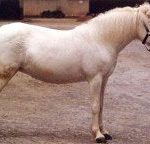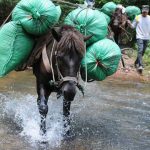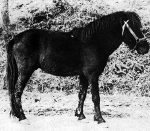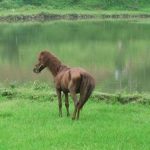Baise Horse
The Baise is a small breed of pony-size horses that have been raised in the pastures of the autonomous Guangxi region of China since more than 2000 years. With their comfortable size, adaptability, and quickness, they serve as an excellent means of communication, and for types of works. Surprisingly, these horses are also used for meat by the local people. They are also known for their good temperament.
Baise Horse Pictures
- Baise Horse Images
- Baise Horse Pictures
- Baise Horse
- Baise Horses
Quick Information
| Also Known As | Guangxi Horse |
| Physical Characteristics | Have a rather small built and stature; the structure is solid along with a heavy head, wide jaw, while the neck is of medium length; the legs are well-developed and strong and the hooves are solid; the tail and the mane are thick |
| Temperament | Willing, affectionate, able |
| Type | Riding Horse, Work Horse, Cart Horse, Farm animal |
| Colors | Bay, black, chestnut, gray |
| Height/Size | 11 – 11.2 hands (average studs, stallions, and mares) |
| Common Uses | General riding, work, meat production |
| Health Problems | Normally healthy |
| Popular Traits | Small in size but very fast and strong; adapted to thriving in high altitudes |
| Feeding/Diet | Normal equine diet including hay, grass, grains, etc. |
| Country of Origin | China |
| Population Status | Common |
| Time of Development | More than 2000 years ago |
Video: Guangxi’s Baise Horse Travelling through the Hilly Terrains
History and Development
The Baise Horse is very primitive and originated in China’s Guangxi region. Guanxi’s climate is such that, it is apt for breeding and rearing equines, and hence, it has been a common practice since ages.
Baise Horses were usually raised in the hilly regions – the high altitudes, and during farming seasons, when not working, these animals were allowed to roam around freely in groups.
In Guangxi, a protected area has also been set aside for these small equines, popularly known as the ‘National Baise Horse Genetic Resources Conservation Area’.
Interesting Facts
- In 1972 and again in 1980, two bronze statues of horses carrying riders, coated in gold, and belonging to the period between 206 and 25 B.C. that was excavated, distinctly showed a close resemblance with the Baise horses in conformation.
- Since around 20 BC, the Baises have been playing a crucial part of the local residents, and have also been an integral part of traditional marriage celebrations.







